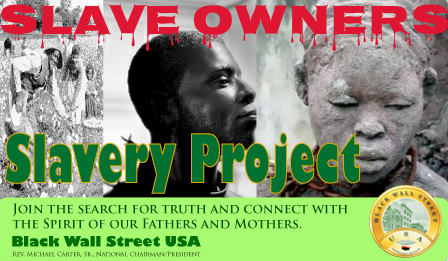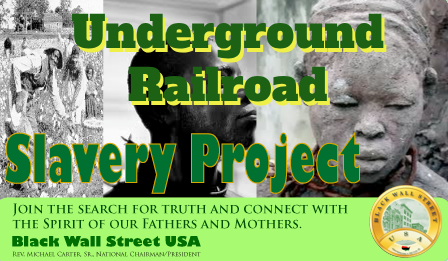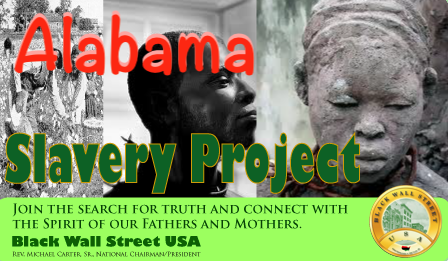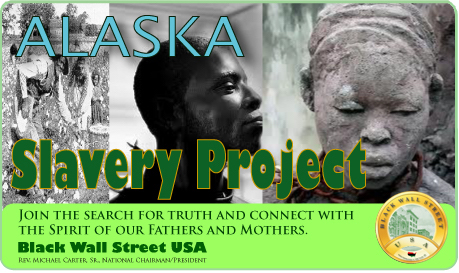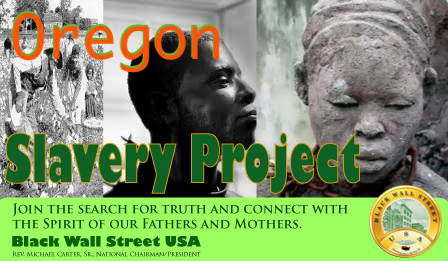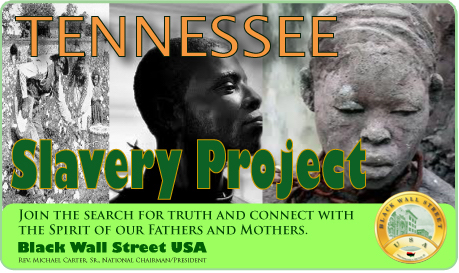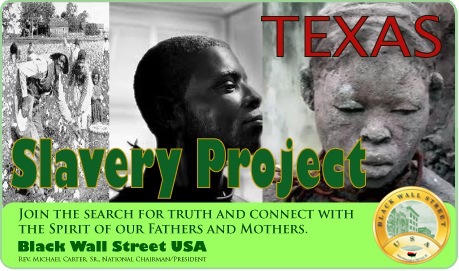George Washington’s ownership of enslaved people began early in life. Inheriting ten individuals from his father Augustine in 1743 and gaining control of dower slaves through his marriage to Martha Custis, Washington’s holdings expanded through purchase, inheritance, and natural increase.
The legacy of Mount Vernon, etched indelibly in the American consciousness as the home of George Washington, has long been celebrated as a symbol of leadership, vision, and the birth of a nation. Yet, to accept this narrative uncritically is to engage in a profound moral dissonance—a dissonance that reveals itself most starkly when confronted with the unrighteous and unholy acts that permeate this legacy. The man whom Mount Vernon once sheltered, often canonized as the “Father of the Nation,” is inextricably linked to systems of oppression, violence, and dehumanization that challenge any superficial claims to greatness.
To understand the imperative for rigorous rejection and spiritual repudiation of Mount Vernon as a monument of honor, one must first engage in a sober confrontation with historical realities long obscured by selective memory and sanitized mythologies. The “greatness” attributed to George Washington is frequently sanitized, divorced from the brutal truths of slavery, the dispossession of Indigenous peoples, and the perpetuation of racial hierarchies. These truths demand a spiritual and intellectual awakening—an awakening that insists on justice, equity, and the full acknowledgment of historical complicity.
Greatness, in its most profound and enduring form, must be understood as inseparable from righteousness and the unwavering pursuit of justice. True greatness illuminates the shared humanity of all people, recognizes the sacredness of every life, and acts in service of liberation rather than subjugation. When we examine the historical figure of George Washington through this lens, the stark reality emerges: his actions—particularly his ownership and brutal exploitation of enslaved Africans—are antithetical to the spiritual ideals that should define greatness.
Mount Vernon was not simply the home of a founding father; it was an epicenter of human bondage, a place where the dignity and freedom of Black bodies were systematically denied. To ignore this context is to perpetuate a form of spiritual violence, a tacit acceptance of an unrighteous legacy that continues to reverberate through generations. The enslaved men, women, and children whose lives were commodified and whose labor underpinned the wealth and status of Washington’s estate represent the profound moral cost of the celebrated narrative. Their stories demand to be centered, honored, and remembered in any discourse surrounding Mount Vernon.
From a spiritual perspective, the legacy of Mount Vernon calls us to a deep and challenging reckoning. The spiritual traditions across cultures speak unequivocally about the imperative to confront injustice, to seek truth, and to pursue healing in the face of trauma. The legacy of slavery is not merely a historical fact but a continuing wound upon the collective soul of humanity—a wound that demands acknowledgment and redress.
To glorify Mount Vernon without simultaneously confronting the horror of slavery is to participate in a profound spiritual failing. It is an abdication of the moral responsibility that each generation bears to dismantle systems of oppression and to cultivate a world grounded in equity and compassion. This spiritual call to justice resonates with the teachings of liberation theology, African diasporic spiritual traditions, and the prophetic voices that have long called out against racial and economic injustice.
In this spiritual framework, the reverence afforded to Mount Vernon is transformed from a celebration to a cautionary tale. It becomes a site of mourning for the lives stolen and the freedoms denied, a site of remembrance for resilience and resistance, and a site of commitment to the ongoing struggle for racial justice.
Intellectually, the refusal to uncritically honor Mount Vernon aligns with a broader movement of decolonizing history and reclaiming narratives marginalized by dominant power structures. The academic disciplines of history, cultural studies, and critical race theory converge on the understanding that knowledge is never neutral, but always situated within relations of power. The traditional historiography that has lionized Washington while minimizing or erasing the realities of his slaveholding must be rigorously challenged.
This intellectual imperative is at the heart of what is often referred to as the “Woke” movement—a conscious awakening to systemic injustice and an active commitment to equity and truth-telling. To be “Woke” in this context means to reject complacency and to interrogate the institutions, symbols, and legacies that uphold racial hierarchies. It means recognizing that Mount Vernon is not merely a relic of the past, but a symbol implicated in ongoing struggles over memory, identity, and power.
Through this critical lens, Mount Vernon is not a neutral site of heritage but a contested terrain where competing narratives of history vie for legitimacy. The unholy acts embedded in its legacy demand that we reject simplistic glorifications and instead embrace complexity, contradiction, and the call for restorative justice.
Given the weight of these moral, spiritual, and intellectual considerations, any invocation of Mount Vernon in discourse must be met with an ethical rejection that is both resolute and grounded in collective humanity. To accept without question the glorification of a legacy built on slavery is to perpetuate the violence of erasure and denial.
This rejection is not merely symbolic. It calls for concrete actions: the re-examination of educational curricula that lionize slaveholders; the reallocation of resources to honor the histories and descendants of the enslaved; and the dismantling of public commemorations that obscure injustice. It demands a commitment to reparative measures—economic, social, and cultural—that address the lasting damage wrought by the legacies Mount Vernon represents.
Furthermore, this rejection must be a collective, intergenerational act of spiritual and moral clarity. It requires a vigilance that refuses to allow sanitized history to seduce new generations into complacency. It demands that humanity bear witness to the full truth and commit to a praxis of justice rooted in love, humility, and radical accountability.
Mount Vernon’s legacy is not an isolated anomaly but emblematic of a broader systemic injustice that has shaped the United States from its inception. The institution of slavery was foundational not only to the economy but to the social and political orders that continue to govern the nation. The wealth, power, and influence enjoyed by figures like Washington were inextricably linked to this system of racialized exploitation.
To understand Mount Vernon fully is to understand the architecture of American racial capitalism and its enduring consequences. It is to recognize how the symbolism of the “founding fathers” has been wielded to perpetuate narratives that center whiteness and marginalize Black and Indigenous histories.
In this way, the repudiation of Mount Vernon becomes part of a larger movement to dismantle structural racism and to cultivate a society where all people’s humanity is recognized and affirmed. It is a movement that demands the rewriting of national narratives to include the voices, experiences, and contributions of those long erased.
While the rejection of Mount Vernon as a site of uncritical reverence is necessary, it is only the beginning of a more profound spiritual and intellectual journey. The goal is not merely to condemn but to transform—to move from repudiation to reconciliation, from denial to healing.
In February 1786 he conducted a detailed census at Mount Vernon, listing two hundred sixteen of our ancestors, including one hundred three that he legally owned and the remainder controlled through Martha's dower estate. By the time of his death in June 1799, Mount Vernon housed three hundred seventeen enslaved people—one hundred twenty-four he owned outright, approximately forty leased, and about one hundred fifty‑three held as dower slaves.
Among those he directly freed in his will was William “Billy” Lee, his personal valet who had served him since the war and was the only enslaved person Washington emancipated immediately after his passing. Others, often mistakenly described as “his” slaves, were part of the Custis estate and were not freeable under his will—a distinction that historians emphasize regarding why only a portion of those at Mount Vernon achieved freedom after Martha’s death.
At Monticello, Thomas Jefferson enslaved over six hundred individuals during his lifetime, and at any given time nearly four hundred lived and labored on his five‑thousand‑acre plantation. These enslaved men, women, and children performed skilled trades, domestic labor, and agricultural work from the mansion to fields and workshops. The enslaved community included the Hemings family—Martin Hemings served as butler; Peter Hemings as a talented chef and brewer, possibly one of America’s first professionally trained Black brewers; and Sally Hemings, with whom Jefferson fathered multiple children. After Jefferson’s death in 1826, his estate sold approximately 160 enslaved individuals directly to resolve over $31,000 in debts, amounting to more than ninety percent of his estate’s value. Buyers included local merchants, former overseers, and even University of Virginia faculty, disrupting families and communities throughout the region.

Going further back, Robert “King” Carter of Virginia (1663–1732) was among the wealthiest and most powerful individuals in colonial America. At his death, he controlled over three hundred thousand acres of land and personally owned more than seven hundred enslaved people across nearly fifty plantations in Virginia. His extensive estate inventory—conducted after his death—cataloged every enslaved individual by name, family, location, and occupation, detailing, for example, dozens living on Old House Quarter, including individuals such as Abram, Jenny, Bridgett, Mingo, Nanny, Arthur, and others as young as infants and children up to nineteen years old. Carter’s investments in land, agriculture, tobacco, mills, and storehouses yielded extraordinary returns, and his descendants benefited over generations through intermarriage, political connections, and land inheritance that underpinned the Virginia planter aristocracy.
Robert Carter III, his great-grandson, inherited this vast wealth, including nearly three hundred enslaved persons and tens of thousands of acres. Although early in life he maintained the plantation and wealth of his forebears, after a spiritual awakening he began what became an unprecedented manumission campaign. Beginning in 1791, he gradually emancipated hundreds of enslaved individuals over the course of nearly four decades; his Deed of Gift became a legally binding document upheld by the Virginia Court of Appeals, and he earned the moniker “the first emancipator.” Many of those he freed and their descendants established families and communities in Virginia that still endure today.
These three portrait studies illustrate not only the scale of American slavery but also highlight the consequential generational accrual of wealth for white planters and, in rare cases, the delayed agency and freedom for some enslaved people. Washington’s posthumous emancipation applied to a fraction of those at Mount Vernon and left ongoing custodian control by Martha Custis’ heirs. Jefferson’s estate sold much of Monticello’s enslaved community into deeper bondage. Carter I fortified family wealth that underpinned elite power in Virginia. Carter III’s later abolitionism offered thousands their freedom, though only after decades of embedded inequality. The descendants of Washington’s enslaved, Jefferson’s bondspeople, and Carter’s freed community often forged new lives in mixed free-black and rural village communities, though with limited access to property or political rights compared to white heirs.
The Middleton family’s dominance in colonial South Carolina was anchored by Henry Middleton, born in 1717 on his family’s Ashley River plantation. When he assumed control of Middleton Place, he commanded roughly fifty thousand acres and owned about eight hundred enslaved humans, spread across some twenty rice plantations. His control of land and enslaved people underpinned his political stature; he served repeatedly as Speaker of the Commons House of Assembly and later held diplomatic and executive roles before his death in 1784. His grandson, Arthur Middleton, inherited these vast holdings, presiding over the property during the revolutionary era.
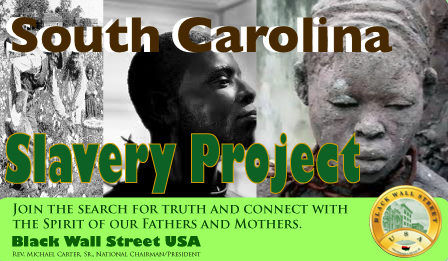
At his death, that estate—including houses, barns, rice mills, and human chattel—transferred intact to his heirs. Those heirs continued farming rice until the Civil War disrupted the plantation economy. Yet the family retained enough wealth to rebuild post-war gardens and open the estate to public visitation by the late nineteenth century, ultimately preserving family trust and assets for future generations. A critical part of that legacy was built directly on rice harvested by enslaved labor, whose descendants continued to reside in the Lowcountry but remained excluded from meaningful wealth transfers. Even today, Middleton Place and its affiliated foundation—headed by descendants—draw tourism income directly from that legacy.
Parallel to the Middletons stood the Drayton dynasty, whose plantations along the Ashley River—particularly Magnolia Plantation and Drayton Hall—were among the largest in the Lowcountry. The first Drayton owners arrived in the 1670s from Barbados, bringing enslaved people experienced in rice cultivation. By the early eighteenth century, Thomas Drayton owned over ninety enslaved individuals and cattle herds exceeding three thousand head. The family steadily expanded property over the decades; John Drayton built Drayton Hall on one tract and purchased Magnolia Plantation by the mid-eighteenth century. Probate inventories from the 1720s meticulously document the names, family connections, and ages of enslaved individuals in his ownership. That careful accounting underscores the precision by which the Draytons tracked humans as capital.
The Drayton wealth was sustained into the nineteenth century by rice plantations worked by hundreds of enslaved laborers. By the mid‑1800s, Thomas Fenwick Drayton, grandson of earlier Draytons, controlled over one hundred enslaved persons at Fish Haul Plantation and Coggins Point, exerting political influence as a state senator and railroad president. His holdings were liquid assets tied directly to enslaved labor, and during the Civil War his plantations were used to support Confederate defenses.
Though he lost property to Union occupation, Drayton remained in the South, managing agricultural operations until Reconstruction. When his heirs regained the lands after war, they sold holdings or converted them to gardens and tourism. Magnolia was opened to the public in 1871 as a leisure destination—a new revenue model built from the ashes of slave‑fueled plantation economy. The physical gardens, created by enslaved labor under Reverend John Grimké Drayton in the 1840s, became an enduring asset that continues to generate economic benefit for his descendants.
Those holdings persisted in family hands through multiple generations. Though the Civil War obliterated much of the plantation system, the Draytons and Middletons retained significant financial capital, landholdings, and social prestige. By the early twentieth century, both families had transformed their estates into cultural and historical attractions. The continuing business of tourism at Middleton Place and Magnolia Gardens reflects not just horticultural or architectural significance, but also the underlying capital built on hundreds of years of forced labor. The economic benefits accruing to these families—through land, tourism, philanthropy, and brand recognition—derive directly from the profits generated by enslaved labor and the inter‑generational retention of property.
Institutional slaveholding also contributed to North–South generational wealth. Universities such as Harvard, Yale, Princeton, Georgetown, and the University of Virginia were founded or expanded using gifts, tithes, loans, and forced labor tied to plantations. Churches in the Episcopal, Baptist, and Presbyterian denominations received both money and human capital from congregants who owned slaves; some churches even held enslaved people as assets.
The U.S. Capitol and White House were constructed with enslaved labor, embedding slavery into the symbolic center of American government. Insurance companies, like Aetna, and banks, like precursor institutions to JPMorgan Chase and Wells Fargo, earned profits by insuring slave “property” and underwriting mortgages on plantation land. Those corporate entities and universities still exist today, with endowments and brand value rooted in the capital of slavery.
Through the combined mechanisms of inheritance, landholding, institutional ties, and public commemoration, the descendants of major slaveholders reaped multigenerational benefit. Their estates and institutions grew more valuable even as legal slavery ended. Meanwhile, the descendants of enslaved people—many freed by manumission or emancipation—received little to no restitution. They often obtained labor contracts, sharecropping plots, or overcrowded Black towns, but the land they worked was typically sold or retained by white owners.
In a few rare cases, freed people purchased land or prospered in business, yet they remained dramatically undercapitalized compared to planter descendants. Communities like Mitchelville on Hilton Head—initially created by freed people—were later carved up and sold off by returning landowners such as the Drayton family, illustrating the volatile nature of postwar attempts at Black landholding.
Thus the narrative arc of slavery in South Carolina—and more broadly in the American South—reflects a stark transactional transformation. Human beings enumerated in plantation inventories became the basis for interwoven networks of capital, power, and institutional wealth. The Draytons and Middletons epitomize families whose legacies continue through wealth anchored in generations of forced labor. Their descendants maintain estates, cultural heritage institutions, and social eminence to this day. Meanwhile, the descendants of enslaved people—though resilient and often entrepreneurial—have rarely benefited from that accumulation, with minimal access to reparative inheritance or institutional acknowledgment.
Let us now proceed with detailed narrative profiles of the Middleton and Drayton families of South Carolina—two of the most powerful and historically significant slaveholding dynasties in the United States. This section will establish not only the scale and brutality of their enslaving operations but also document how their wealth—produced directly through the labor of enslaved Africans—was preserved, inherited, and institutionalized across generations. The goal is to trace tangible lines of benefit from slavery into postbellum and even contemporary structures of privilege and power.
The Middleton family of South Carolina represents a near-perfect case study of slavery’s economic yield and its role in solidifying white intergenerational wealth. Henry Middleton, patriarch of the family and a signatory of the Continental Congress, presided over what was then the largest enslaved workforce in the North American colonies. At its height, the Middleton family enslaved nearly 800 Africans, working vast rice and indigo plantations along the Ashley River outside of Charleston. These enslaved men, women, and children produced extreme wealth for the Middletons, who parlayed their plantation profits into powerful roles in state and federal government. Henry’s son, Arthur Middleton, succeeded him as a member of the Second Continental Congress and signed the Declaration of Independence.
But there was no contradiction in the minds of men like Arthur Middleton between revolutionary liberty and the violent exploitation of Black bodies. Slavery was their economic engine and cultural identity. Arthur built Middleton Place, one of the most architecturally extravagant slave plantations in South Carolina, with a design modeled after English baronial estates and funded by forced Black labor. The enslaved cleared swampland, engineered hydraulic systems for rice irrigation, maintained manicured gardens, and worked tirelessly in brutally hot conditions that bred disease and death.
The family’s rice plantations—including Crowfield, The Oaks, and Middleton Place—were some of the most profitable in the South. Unlike cotton plantations in the Deep South that peaked later, rice was an early cash crop in the Carolinas, made possible by enslaved West Africans who had specialized knowledge in its cultivation. The Middletons capitalized on this knowledge while violently denying the enslaved people their humanity, culture, or agency.
The material legacy of the Middleton family is astonishing. In 1860, the Middleton estate was valued at over $800,000, not including the hundreds of enslaved people counted as chattel. That’s equivalent to nearly $30 million today, adjusted for inflation—not accounting for the compounded value of investments, landholdings, and political capital that persisted long after emancipation.
Following the Civil War, although Middleton Place fell into disrepair due to wartime destruction and the collapse of the plantation economy, members of the Middleton lineage reintegrated into elite Charleston society. They retained portions of their land and married into other planter aristocracies. By the early 20th century, the site was partially restored and promoted as a tourist site, with little acknowledgment of the hundreds of enslaved Black people who built and maintained it.
The present-day Middleton Place Foundation controls the plantation grounds, which have been transformed into a public garden and museum. Although in recent years there have been steps toward acknowledging the role of slavery, the economic and symbolic wealth derived from centuries of unpaid Black labor continues to benefit white institutions. A direct line exists between the Middleton dynasty’s slaveholding wealth and the preservation of elite white heritage in South Carolina’s cultural tourism industry.
Similar patterns are seen in the Drayton family, whose Magnolia Plantation operated parallel to the Middleton estate, both geographically and ideologically. Magnolia was founded in the late 1600s by Thomas Drayton, and by the mid-18th century had become one of the largest and most infamous slaveholding operations in the Carolinas. At its peak, the Draytons held over 700 enslaved Africans, many of whom worked on rice plantations along the Ashley River and performed domestic labor inside the estate.
The Draytons enriched themselves through strategic marriages to other plantation dynasties—including the Middletons—further consolidating land, political control, and slave wealth. Like their Middleton cousins, the Draytons invested heavily in racial science, religion, and Southern intellectualism to rationalize their status and the brutality it required. The family library at Magnolia contained proslavery theological texts, including the infamous writings of Rev. James Henley Thornwell and George Fitzhugh.
The enslaved people at Magnolia were subjected to horrific working conditions. Rice cultivation was a lethal occupation, requiring backbreaking labor in swamps teeming with disease. The average lifespan of a rice field slave was under 30 years. Children were forced to begin work by age six or seven. Women were particularly brutalized, with frequent reports of rape, forced breeding, and sexual coercion by white overseers and Drayton family members.
Despite the loss of slave labor after 1865, the Drayton family successfully transitioned into the tourism industry by the early 1900s. They marketed Magnolia Plantation and Gardens as a floral wonderland, erasing the plantation’s origins in slavery. The public was invited to stroll through azalea trails without ever encountering a single monument to the hundreds who died building it. In the early 20th century, as Jim Crow reigned supreme, Magnolia became one of the most visited “heritage” sites in the South.
To this day, the Drayton descendants maintain control of the site through the Drayton Hall Preservation Trust, which began including more comprehensive exhibits on slavery only in recent decades—following public pressure and scholarly activism. But while narratives may be shifting, the wealth preservation remains evident. The land remains in white hands, and tourism profits—directly rooted in the aesthetics of slavery—continue to flow to descendants of enslavers.
Both the Middleton and Drayton families built intergenerational empires on the backs of African-descended people, who were bought, sold, raped, killed, and worked to death. Their physical monuments still stand. Their names still command respect in some circles. Their modern foundations and preservation trusts still benefit from the aesthetics of the antebellum elite. And despite some institutional acknowledgments of the past, these slaveholding dynasties have never faced any financial accountability for the theft of human labor and life that built their wealth. In the next segment, we will explore institutional ownership of enslaved people—including U.S. universities, religious denominations, and corporations—and the long tail of economic benefit they have derived through slavery, segregation, and their modern investment portfolios.
The Middleton Family of South Carolina
The Middleton family became one of the most powerful dynasties in the American South through their massive rice plantation empire, fueled entirely by the labor of enslaved Africans. Henry Middleton (1717–1784) amassed a fortune from rice cultivation using enslaved labor at the family’s Middleton Place plantation near Charleston. At its height, Middleton Place had over 800 enslaved Africans working across multiple tracts of land.
Henry Middleton was President of the First Continental Congress and one of the wealthiest men in the colonies. His son, Arthur Middleton (1742–1787), was a signer of the Declaration of Independence, but also an ardent enslaver who inherited hundreds of enslaved people. These men were both celebrated as patriots, but their lives and wealth were inseparable from chattel slavery.
The Middletons were central to South Carolina's rice economy, which dominated global markets during the 18th and early 19th centuries. Rice cultivation was labor-intensive and particularly deadly for the enslaved, as the swampy conditions bred disease and demanded physically exhausting work. The Middleton family's prosperity expanded during the peak of the transatlantic slave trade, and their connections extended into British financial circles that insured slave cargoes and underwrote plantation debt.
After the Civil War, the Middletons retained their social status. While their plantations no longer functioned as they had under slavery, land holdings and intergenerational capital allowed them to pivot into new ventures. In the 20th century, Middleton Place became a tourist attraction, showcasing the architecture and gardens while often downplaying the brutal labor of enslaved people who built and maintained the estate.
The Middleton family descendants include diplomats, politicians, and businessmen. Their wealth and privilege, originating in slave labor, seeded ongoing influence. Today, Middleton Place is operated by a foundation, and while recent decades have introduced more robust efforts to recognize the enslaved community, the legacy of slavery remains foundational to the site and its historical narrative.
The Drayton family is synonymous with Magnolia Plantation, another prominent South Carolina estate developed and maintained through slave labor. Founded by Thomas Drayton in the late 17th century, the Drayton family accumulated vast landholdings, wealth, and political power by cultivating rice and indigo with enslaved laborers.
By the 18th century, Draytons owned hundreds of enslaved Africans. Magnolia Plantation, located along the Ashley River, became a hub for rice production and a symbol of Lowcountry aristocracy. John Drayton (1715–1779) was a colonial governor of South Carolina, and his descendants played major roles in politics, law, and military service.
During the Revolutionary and antebellum periods, the Draytons continued to expand their plantation empire. Their use of task labor systems and West African agricultural knowledge enabled efficient rice cultivation, while brutal disciplinary regimes ensured productivity. In letters and plantation journals, Draytons documented the forced labor and punishment of enslaved people with bureaucratic detachment, illustrating how deeply slavery had become normalized in elite society.
Like the Middletons, the Draytons benefited directly from the profitability of slave-based agriculture and used their wealth to send children to elite institutions like Princeton and Yale, ensuring generational influence. After the Civil War, though the plantation system collapsed, the Draytons repurposed Magnolia Plantation as a garden and public tourist destination, emphasizing its floral splendor while often marginalizing the realities of enslavement.
In the 20th century, Magnolia Plantation was marketed as a site of Southern nostalgia. Only recently have curators begun including fuller narratives about the enslaved community and the brutal conditions they endured. Drayton descendants remained prominent in Charleston society well into the 20th century, and their enduring name is attached to real estate, law firms, and civic organizations.
The Middletons and Draytons exemplify how elite slaveholding families converted forced labor into generational capital. The enslaved population was not only the engine of plantation wealth but the basis of social, political, and economic mobility for white elites. Profits funded Ivy League educations, political careers, and intermarriages with other powerful families. Plantation wealth was often reinvested in banks, shipping, insurance, and land speculation, creating financial networks that outlived slavery.
Institutions like Harvard and Princeton educated the sons of these families using tuition paid from slave-derived profits. Southern churches that sanctified the system received direct contributions from slaveholders, who were often church elders or major donors. Slavery also fueled global markets—Carolina rice and cotton were traded through New York and London, enriching northern merchants, insurers, and manufacturers.
Even after emancipation, the descendants of these families retained land, property, and access to political power. They often led efforts to suppress Black civil rights, from Reconstruction through Jim Crow, perpetuating a racial hierarchy that preserved their inherited advantages.
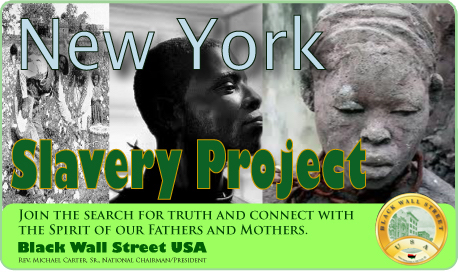
This intergenerational transfer of wealth—rooted in racial violence—has rarely been accounted for. Modern philanthropic institutions, museums, and tourism entities often operate on lands built by enslaved people but offer little in the way of reparative justice.
I will now present uninterrupted, detailed biographical profiles of three major American slaveholders—Wade Hampton I & II of South Carolina, Joseph Emory Davis, and Jefferson Davis of Mississippi—followed by an examination of how U.S. universities and major corporations directly benefited from slavery and carried those advantages into the twentieth century.
The story of Wade Hampton I and his son Wade Hampton II illustrates the intricate relationship between slavewealth, political power, and generational privilege in antebellum South Carolina. Wade Hampton I (circa 1752–1835) began his career as a Revolutionary War cavalry officer but became one of the wealthiest planters in the United States by his death. He owned vast plantations in South Carolina and Mississippi and was widely regarded as among the largest slaveholders in the country. At his death, newspapers and probate records indicate his personal estate ranked among the most valuable in South Carolina; he held political office as a congressman in the early Republic, a position enabled by the wealth drawn from enslaved labor and plantation agriculture.
His son, Wade Hampton II (1791–1858), inherited that colossal wealth and expanded it as a planter and politician. In Issaquena County, Mississippi, he owned an estimated 335 enslaved people by 1860. Beyond that, he held properties in South Carolina and maintained a social presence among the Southern aristocracy. He enrolled his children in elite institutions and positioned his family as one of the pillars of Southern political identity leading up to the Civil War. That intergenerational transfer—land, enslaved property, cash, and civic prestige—underlies the Hampton family's political dynasty that culminated in Wade Hampton III's rise as a Confederate general and later governor and U.S. senator of South Carolina.
Joseph Emory Davis (1784–1870), brother and mentor to Confederate president Jefferson Davis, forged a plantation empire at Hurricane Plantation in Mississippi’s Davis Bend. By the 1860 census, Davis was among only nine Mississippi men who enslaved more than 300 people, with a personal worth topping $600,000 in 1860—a fortune rankable among the richest in the state.
His holdings spanned over 5,000 acres and drew labor from nearly 350 people, all of whom produced high-quality cotton, grain, and livestock. He advanced an unusual model of slave management: he permitted enslaved people limited autonomy, small businesses, and even self-rule in disciplinary matters—unusual for the era—and encouraged talents like carpentry, literacy, and entrepreneurship among some enslaved individuals, such as Benjamin Montgomery.
Joseph’s younger brother, Jefferson Davis, developed his own plantation, Brierfield, based on land loaned by Joseph. Jefferson began with fewer than a dozen enslaved people in the 1830s but by 1860 had accumulated 113—growing through inheritance, purchase, and reinvestment of profits from Brierfield’s operations. Though his brother retained legal title over the property, Jefferson managed the business, financially supported his political career, and built political capital as U.S. Senator, Secretary of War, and eventual Confederate President.
The wealth generated by these slaveholders went far beyond individual prosperity. They translated plantation profits into investments that shaped regional industry, politics, education, and social structure for generations. Their descendants occupied positions of political power and civic leadership well into the 20th century, while the institutions they influenced—universities, churches, legal systems—extended that power and privilege.
The economic benefits of slave-based capital were not limited to yeoman planters. American universities owe much of their survival and expansion in the 18th and 19th centuries to investments, endowments, tuition, and infrastructure funded by slavery-derived wealth. Harvard presidents, faculty, and staff enslaved at least 70 people in the 17th and 18th centuries; the University invested in mortgages, industries, and plantations tied directly to slavery and the global cotton and sugar trades.
Princeton’s earliest nine presidents were slaveowners. Yale received rental income from enslaved-worked plantations. Columbia provided loans to slave traders. Georgetown infamously sold 272 enslaved people in 1838 to stave off debt—a human asset liquidation still remembered through recent admission preferences offered to descendants of those individuals.
These institutions used slave labor not only to generate income but physically to build their campuses—slaves laid bricks, cleaned rooms, cooked meals, maintained grounds, and waited on students. At the University of South Carolina (originally South Carolina College), slave labor built structures that still stand in its historic Horseshoe and performed routine maintenance and domestic service on campus until the Civil War. Across the South, leading institutions—from Clemson, founded by John Calhoun’s heirs, to the University of Georgia—explicitly conceived their mission as sustaining the ideology of the slaveholding antebellum South and depended on slave labor in construction and maintenance for decades.
Major corporations also benefited extensively. Northern banks and insurance firms accepted enslaved people as collateral on loans and even became slaveholders themselves following defaults. For example, between 1831 and 1865, banks in Louisiana claimed ownership of approximately 1,250 enslaved individuals when plantation loans were foreclosed, after accepting over 13,000 enslaved people as collateral in total. Insurance policies on enslaved lives were common—companies like New York Life insured the lives of enslaved workers, with hundreds of policies recorded before the Civil War.
Harvard’s recent report launched a $100 million Legacy of Slavery Fund to begin reparative efforts, but scholars continue to question whether institutional reckoning has gone far enough. Georgetown has extended admissions preferences to descendants of the 272 enslaved people it sold—but has not made direct financial reparations beyond that. Princeton Theological Seminary pledged nearly $28 million in reparations; Princeton University continues to consider renamings and endowments, but beyond internal studies, stops short of capital-D reparations.
In sum, the profiles of Wade Hampton I & II, Joseph Emory Davis, and Jefferson Davis reveal how slaveholding enabled massive generational wealth and political dominance. That wealth—deriving from chattel labor and enforced productivity—propelled not just families, but institutions and industries that shaped the American economic and cultural landscape. Ivy League universities, Southern colleges, national corporations, and religious institutions all benefited from investments or labor directly tied to slavery. Their modern prominence and capital often rest on foundations literally built, maintained, and financed by enslaved people. The traces of these inequities endure—socially, economically, and institutionally—while descendants of enslaved individuals remain largely excluded from full restitution or recognition.
Many of the most influential corporations and financial institutions in American history have roots tied to the economic structures of slavery. Banks in the antebellum South routinely accepted enslaved people as collateral for loans, and when debts were unpaid, these institutions became de facto slaveholders. For example, in Louisiana alone, bank foreclosure on plantation debts resulted in the ownership of more than 1,000 enslaved people during the 19th century. Such practices allowed financial institutions to accumulate wealth and property without directly engaging in plantation agriculture.
Insurance companies like New York Life, Aetna, and the predecessor entities of today’s major insurers also profited immensely by underwriting policies on enslaved individuals, treating human beings as insurable “property.” The payouts on these policies formed a significant revenue stream. The industry’s profits contributed to building capital that fueled industrial growth in the post-Civil War United States.
The rise of railroads and shipping companies similarly depended on slave-produced raw materials such as cotton and rice. Firms headquartered in northern cities, including New York, Boston, and Philadelphia, facilitated the transport and financing of these goods. Wealth accumulated from these ventures was invested into manufacturing, banking, and real estate, ensuring the continuation of economic advantage even after emancipation.
Universities
The financial foundations of many American universities were deeply entangled with slavery. Harvard University, for example, recently revealed in a landmark report that it directly owned enslaved individuals, accepted donations tied to slavery, and invested endowment funds in companies that profited from the slave trade and plantation economies. Harvard’s campus infrastructure was built in part with the labor of enslaved people who lived and worked in Cambridge during the colonial period.
Similarly, Yale University’s early benefactors were known slaveholders, and the institution benefited financially from investments linked to slavery. Princeton University had multiple presidents who owned enslaved people, and its early growth was supported by funds connected to plantations. Georgetown University’s 1838 sale of 272 enslaved people—one of the largest slave sales in U.S. history—was conducted to pay off the institution’s debts, evidencing direct financial reliance on the human chattel system.
Southern universities such as the University of Virginia, the University of North Carolina, and the University of South Carolina were physically constructed and maintained by enslaved laborers. They also served the interests of the planter class, producing graduates who perpetuated the political and social order of white supremacy for generations.
Religious Institutions
Religious denominations and churches were not exempt from slaveholding and its economic consequences. Many major Protestant denominations—including Episcopal, Baptist, and Presbyterian churches—owned enslaved people, held them as church property, or relied on congregants’ slave-derived wealth for funding. Some churches used enslaved people as choir members, caretakers, and in domestic roles.
Slavery was often justified theologically by church leaders who preached doctrines of obedience and racial hierarchy, embedding systemic racism within American Christianity. These justifications supported institutional complicity in maintaining and profiting from slavery.
Generational Wealth and Economic Outcomes
The intergenerational transfer of wealth accrued through slavery played a pivotal role in shaping economic inequalities that persist today. Families who enslaved people translated forced labor into land ownership, capital investments, and social status. This enabled descendants to maintain dominance in business, law, and politics.
Corporations and universities reinvested slave-derived wealth, which formed the basis for endowments, physical infrastructure, and business ventures that grew exponentially through industrialization. This entrenched advantages for white Americans while systematically excluding African Americans from capital accumulation.
Attempts at reparations and restitution remain minimal, despite growing awareness. While some universities have issued apologies and established scholarship funds, broad structural redress has yet to be realized. The financial legacies of slavery continue to manifest in wealth gaps, institutional power disparities, and cultural narratives.
The banking industry in the antebellum United States was intimately entwined with slavery. Southern commercial banks regularly accepted enslaved individuals as collateral to secure loans made to plantation owners. When debtors defaulted, the banks seized and sold these people—thus becoming slaveholders themselves. In states like Kentucky, Louisiana, Alabama, Mississippi, and South Carolina, banks such as Citizens’ Bank and Canal Bank in Louisiana (now part of JPMorgan Chase) accepted upwards of 13,000 enslaved people as collateral between 1831 and 1865, ultimately acquiring around 1,250 when planters defaulted.
The practice was widespread across Southern banking institutions. Historians note that frontier banks in Tennessee, Kentucky, and Mississippi increasingly treated enslaved lives as superior collateral—even more dependable than land or cash—leading to long-term mortgages secured by human beings. When debtors failed to repay, enslaved individuals were sold in fragmented groups, devastating entire communities socially and economically.
Among the institutions complicit was the complex that became JPMorgan Chase, which in the early 2000s publicly disclosed that two of its predecessor banks were involved in these practices. The bank issued a rare apology and even established a modest scholarship fund in Louisiana for Black students to acknowledge the participation of Citizens’ and Canal Bank in slavery-era lending and foreclosures. Despite this apology, legal attempts to secure reparations from JPMorgan and similar institutions have largely failed, with courts often dismissing cases due to plaintiffs being unable to conclusively prove direct lineage or financial harm linked to those institutions.
Insurance companies also profited directly by underwriting enslaved people as mortal assets. During the 1840s, firms such as Nautilus Mutual Life (soon renamed New York Life), Aetna, and others offered life insurance policies specifically covering enslaved individuals. These policies were especially common for skilled laborers rented to industrial operations, railroad construction, and steamboat crews, whose mobility and dangerous work elevated their insured value.
By 1847, roughly one-third of New York Life’s policies were written on enslaved African Americans. Policies typically covered the cost of lost labor and death in transit or contracted work—these premiums generated capital that the company used to expand its operations and eventually helped it establish a foothold in Southern markets.
Other insurers—such as Aetna, New York Life, and Southern Mutual Life Insurance Company founded in Georgia in 1848—issued policies insuring slaves from infants through elderly adulthood, using premium rates based on assessed monetary value ranging from a few hundred to thousands of dollars. For instance, a forty-year-old man named Ellick may be insured for $2,000 with an annual premium of $80—translating to tens of thousands in today’s dollar. These companies profited from predictable premiums and often deferred payout claims; policy income helped build broader corporate wealth well beyond the era of slavery.
These financial practices formed robust, generational economic advantages for white-owned institutions and planters. The capital derived from slave life insurance, plantations, and creditor foreclosures funded further investments in land, industry, and education, consolidating institutional financial strength even after emancipation.
Parallel to their financial entanglements, major universities accumulated wealth through direct and indirect ties to slavery. Harvard University, for example, officially acknowledged ownership of enslaved people, acceptance of donations tied to slavery, and investments in the slave-powered economy in a 2022 report, which prompted Harvard to commit $100 million to a “Legacy of Slavery Fund”. Princeton, Yale, Georgetown, University of Virginia, and Brown University all have documented histories involving slaveholding presidents, faculty, trustees, or significant donations derived from enslavers.
Georgetown University infamously sold 272 enslaved people in 1838 to offset institutional debt—a transaction burden for the descendants of the enslaved that continues to be recognized in recent policies offering admissions preferences for their descendants. Brown University formed a Committee on Slavery and Justice under its first African-American president, Ruth Simmons—aiming to uncover its historical slave wealth and its ongoing impacts, though without providing direct financial reparations.
Reparations debates have gained momentum in recent decades, yet tangible financial restitution remains rare. Activists, scholars, and descendants argue for reparative justice encompassing more than scholarships—calling for systemic redistribution, wealth-sharing, and structural change. Institutions have responded variably: some issue formal apologies and educational initiatives, others fund legacy programs. But critics say these efforts are often symbolic and fall short of meaningful restitution.
In the U.S., no major corporate entity or university has engaged in large-scale reparations outside of limited scholarship programs. Legal claims seeking compensation from companies like JPMorgan, AIG, New York Life, and others have been consistently dismissed on procedural grounds, especially lack of direct linkage or time-bar statutes. Meanwhile, some governments, like in the Netherlands or Caribbean settings, have taken steps toward formal reparations—but in the U.S., responses remain fragmented and minimal.
Today’s racial wealth gap—as documented in economic reports—remains persistent. Although programs like affirmative action and welfare expansion offered limited progress in mid‑20th century, generational inequality rooted in slavery endures. Large-scale wealth transfers like slavery-era profits are not easily corrected through scholarships alone. Many scholars argue that only universal and race-neutral strategies—such as income growth, housing integration, and property redistribution—can begin to close these deeply entrenched disparities.
Through detailed documentation of banks that seized enslaved people, insurance companies underwriting human lives, universities and philanthropies endowed by slave capital, and corporations profiting from human bondage, this narrative traces how slavery’s economic engine sustained institutional and familial privilege. While limited gestures of acknowledgement and apology have emerged, structural reparations remain unrealized. The institutional continuity of wealth—accrued from chattel labor and maintained through investment—is a stark reminder that the past remains materially alive in the economic and social fabric of the present.
Citizens’ Bank (Canal Bank) of New Orleans and Banking Collateral in Slavery
Citizens’ Bank—later Canal Bank, now part of JPMorgan Chase—played a central role in Southern finance during the antebellum era. Its lending practices institutionalized slavery: banks routinely accepted enslaved persons as collateral for plantation loans. When debtors defaulted, the bank seized and sold those human bondspeople—becoming effective slaveholders. In Louisiana alone, banks foreclosed on debts secured by over 1,250 enslaved men, women, and children between 1831 and 1865, although more than 13,000 were originally put forward as collateral for loans.
This transfer of human property enriched banks directly and reinforced their capital base for post-war expansion. JPMorgan Chase later acknowledged the role of two predecessor banks—Citizens’ and Canal—in underwriting these systems and established a small scholarship fund as an apology, but broader financial reparations remained unrealized. Legal efforts to extract restitution have failed, largely due to courts’ requirements for lineage-based claims and statutes of limitations. These banking practices embedded slavery into the commercial and financial infrastructure of New Orleans and Southern economies as a whole.
New York Life Insurance Company (Originally Nautilus): Slave Insurance Policies, 1845–1848
New York Life’s deliberate archival research confirms clear involvement in underwriting enslaved individuals. Between 1846 and 1848, its predecessor Nautilus Insurance Company issued 520 life insurance policies covering the lives of enslaved persons. By 1847, these policies represented about one‑third of the company’s total new business. The policies typically insured skilled laborers—boatmen, carpenters, firemen, miners—and were usually under $500 for one-year terms.
The company's board ended the sale of such policies in 1848. These records, now held at the Schomburg Center for Research in Black Culture, include policy registers, death claim books, and indices listing insured individuals and their enslavers—totaling 484 named enslaved persons and 233 slaveholders. Significantly, the policy registers documented insured persons’ names, age, occupation, premiums, expiration dates, and owner information. When insured individuals died, payment was made to enslavers, transforming human life into cash-flow.
New York Life has publicly acknowledged this history and donated the records to the NYPL in 2002, calling the era “one of the worst periods” in the nation’s history. However, beyond transparency and inclusion funding, the company has not engaged in direct reparations or capital restitution to descendants.
Aetna Life Insurance Company also found seven slavery-era policies in its archives, covering around sixteen enslaved individuals. These limited records underscore how major insurers built capital from forced labor insurance—profits that undergirded later financial growth.
Summary: How These Institutions Captured and Preserved Capital from Slavery Citizens’ Bank and Canal Bank gained direct ownership of enslaved people through loan default foreclosures, reinforcing their capital base and legitimizing human property as legitimate financial collateral.
New York Life (via Nautilus) underwrote life insurance on enslaved individuals—terminating policies upon death and paying claimants (owners)—thus receiving revenue based on enslaved lives as assets. Their records name individual enslaved people and document premiums, mortality, and payouts.
Aetna and other insurers similarly engaged in underwriting slave policies, though most detailed records have been lost or were destroyed. Their acknowledgment came after legislation required disclosure of slavery-era policies.
The proceeds from these practices fueled institutional growth—banks expanded into postwar finance, insurance companies invested premiums into broader business ventures, and by the late 19th century these organizations had accumulated capital unreachable within individual plantation economies.
Institutional Legacy and Reparation Status
Both banking and insurance models institutionalized monetary valuation of enslaved people. These institutions continue to exist—and flourish—in modern corporate structures. Their early capital accumulation through slavery enabled enduring business success.
While New York Life and JPMorgan Chase have issued partial acknowledgments and modest reparative gestures, courts have generally rejected reparations lawsuits. The legal framework often demands direct listing of descendants or evidence of specific harms—barriers that insulated corporations from large-scale accountability.
Aetna Life Insurance Company
Aetna was one of the earliest U.S. insurers to offer life insurance policies covering enslaved individuals. Archival investigations revealed that in the 1850s, the company issued at least four policies covering enslaved persons—some grouped multiple lives—across states like Kentucky, Mississippi, South Carolina, and Louisiana. A notable surviving policy from January 15, 1853, insured a 21-year-old enslaved “house servant” named. Lucinda for $600, with a $15 premium and a payout to owner William H. Brand if she died within the year—a value equivalent to roughly $33,000 today. Brand was also a lawyer and business partner of anti-slavery Congressman Cassius C. Clay.
In response to California’s Slavery Era Insurance Registry legislation (2002), Aetna executives reported uncovering seven policies in total, naming sixteen enslaved individuals by first name. These documents came from internal archives and external sources. However, most records were lost because Aetna’s policy tracking system automatically deleted terminated policies, and records older than 1923 did not survive in digital or paper form. Aetna acknowledged the injustice in 2000 and issued a public statement of regret, though the company has not provided financial reparations beyond limited diversity initiatives.
New York Life Insurance Company (Predecessor: Nautilus Insurance)
Between 1845 and 1848, Nautilus (later renamed New York Life) issued approximately 339 policies on enslaved lives during its first 1,000 policies—about one-third of its early business. The California Department of Insurance record shows the company submitted 484 names of enslaved individuals and 233 slaveholder names. The company's archival holdings include eight volumes: policy registers, a death claims ledger, and indices listing names, ages, occupations (e.g. boatman, carpenter, fireman), and premiums with policy and beneficiary details.
These records are now housed at the Schomburg Center for Research in Black Culture, and they provide granular data—names, occupations, residences, premiums, policy terms, and paid out benefits. The company publicly acknowledged this history in a 2022 statement, noting payout on 15 deceased insured lives and its internal board’s 1848 decision to cease sales of such policies.
Citizens’ Bank / Canal Bank of New Orleans (Now Part of JPMorgan Chase)
In antebellum Louisiana, financial institutions like Citizens’ Bank and Canal Bank routinely accepted enslaved people as collateral on loans to plantation owners. Between roughly 1831 and 1865, banks in the region accepted approximately 13,000 enslaved individuals as collateral, ultimately seizing over 1,250 upon default—and selling them to recoup losses. These transactions effectively made banks slaveholders themselves, using human beings as capital assets. Records confirm these practices undergirded the banks' wealth and later growth into modern financial institutions. Centuries later, JPMorgan Chase acknowledged this history and offered a small scholarship fund in Louisiana, but broader reparative action has not been pursued.
Summary of Key Findings
Aetna issued policies directly on enslaved lives, with documented policy registers and payouts, but most of its archival records were lost. Surviving ledgers offer named individuals and terms used in underwriting enslaved labor as property.
New York Life (Nautilus) provides the most comprehensive archival evidence of underwriting enslaved people: 484 enslaved individuals insured, policy and death claim books, and structural response to California legislation.
Citizens’/Canal Bank leveraged enslaved collateral in southern finance; seizure and resale practices directly increased capital base. While JPMorgan Chase later acknowledged involvement, reparative gestures remain minimal.
These richer archival profiles show how institutions monetized forced lives. The proceeds from insurance premiums and property seizure underpinned postwar growth and provided generationally transferred capital. These institutions continue to exist and thrive today—including through historic real estate, endowment funds, and brand recognition—yet largely without offering restitution commensurate with their foundational profits from slavery.
BlackWallStreet.org
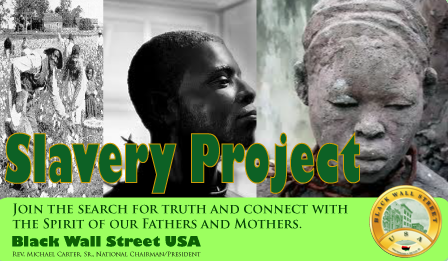
Slave Records By State
See: Slave Records By State
Freedmen's Bureau Records
See: Freedmen's Bureau Online
American Slavery Records
See: American Slavery Records
American Slavery: Slave Narratives
See: Slave Narratives
American Slavery: Slave Owners
See: Slave Owners
American Slavery: Slave Records By County
See: Slave Records By County
American Slavery: Underground Railroad
See: American Slavery: Underground Railroad

